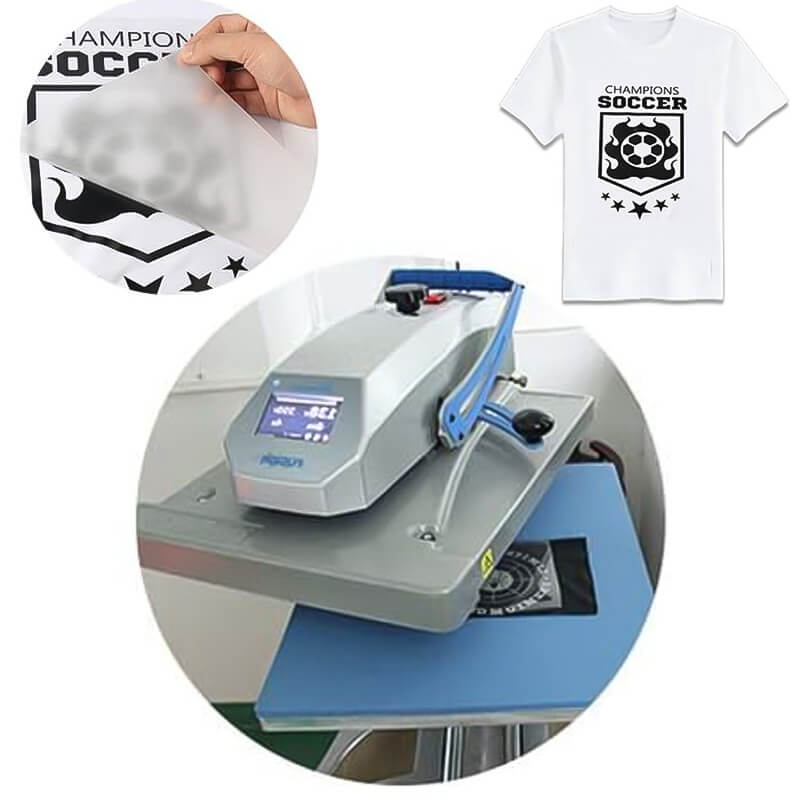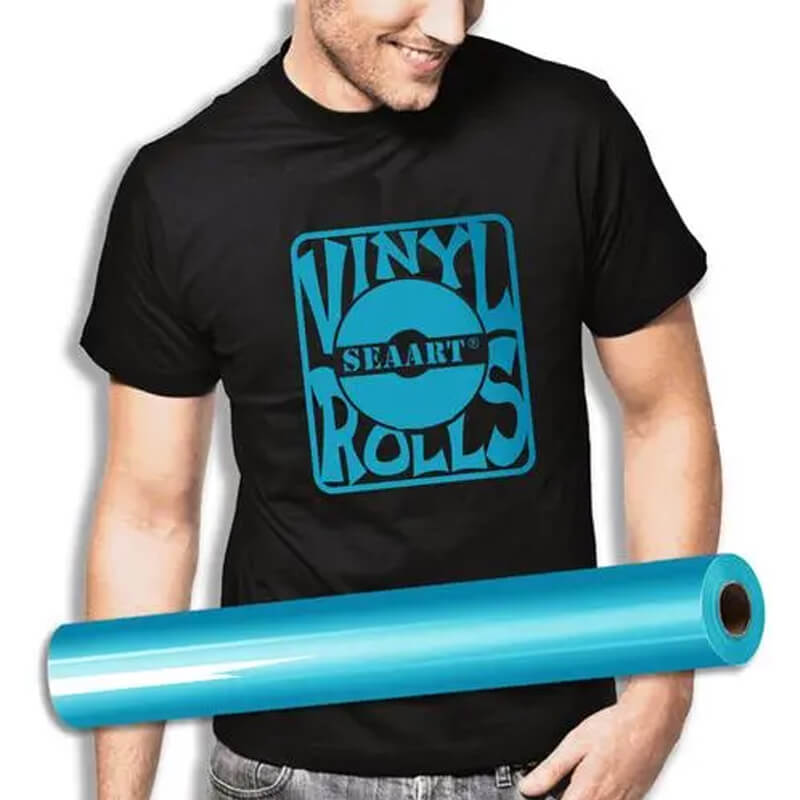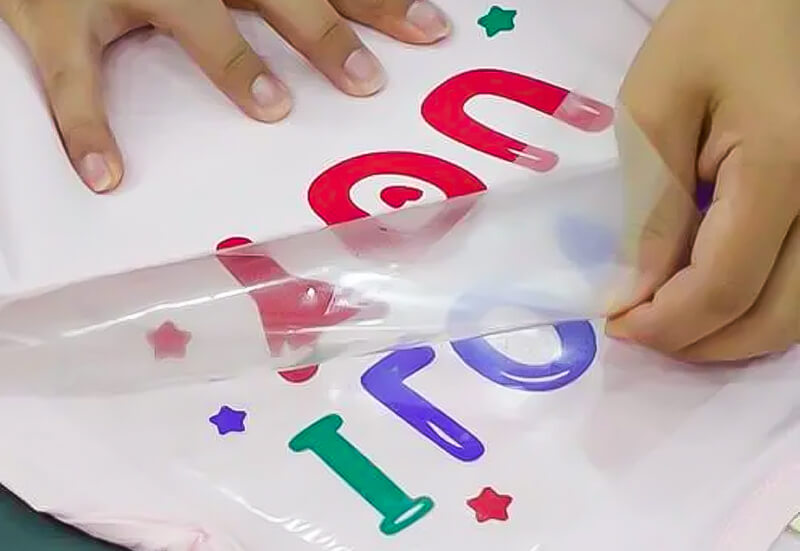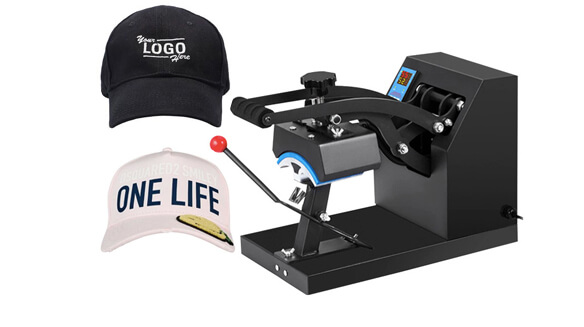Does Heat Transfer Vinyl Last? The Truth About Durability
Curious about the longevity of heat transfer vinyl? You’re not alone. Given the plethora of HTV options out there, pinpointing the most durable one can be a real challenge. As someone who has tinkered with vinyl crafts, I share your concerns. That’s why I’ve put in the time to research how to maximize the life of your HTV projects. In this article, we’ll delve into the key elements that influence durability. Additionally, we’ll offer practical advice on how to care for and store your HTV creations. So, let’s get started on ensuring your heat transfer projects stand the test of time!
What is heat transfer vinyl?
Wondering what heat transfer vinyl (HTV) actually is? Simply put, HTV is a specialized polyurethane material that comes with an adhesive backing. When subjected to heat and pressure, this adhesive activates, allowing the vinyl to stick securely to various surfaces like fabric, wood, plastic, and even metal.
Primarily, HTV is the go-to material for customizing textiles, such as t-shirts and hoodies. But what about other methods? If you’re wondering what is a screen print transfer, it’s another popular method for customizing textiles. However, there are debates on which method is superior: embroidery vs heat press or screen printing vs heat press.
Unlike regular adhesive paper, it won’t damage the fabric underneath. Beyond apparel, HTV is also great for home décor projects that require intricate details, including cushions and quilts.
So, how does it work? First, you’ll need to cut your chosen design using specialized equipment. Next, you apply heat and pressure to the cut material—usually with a household iron or a professional-grade heat press machine. Wondering what size heat press is best for shirts? Click to find out more. The goal here is to achieve a flawless bond to your chosen surface without any unsightly bubbles or blurs from overheating.

What Determines the Longevity of Heat Transfer Vinyl?
Different factors determine the longevity of heat transfer vinyl, including the quality of the vinyl, fabric type, and adhesion strength, surface smoothness, correct heat settings, and proper preparation and transfer techniques.
How long do vinyl heat transfers last?
The durability of vinyl heat transfers is influenced by multiple factors such as the type of vinyl used, how it’s applied, and the quality of the garment. However, when comparing with other methods, a common question arises: does screen printing last longer than vinyl heat transfers? If you’re also curious about the time it takes for different printing methods, you might find our article on How Long Does It Take To Print A Shirt helpful.
Typically, lower-quality vinyl may last for about 20-30 washes, medium-quality for 50-70 washes, and high-quality vinyl can endure 100 or more washes. Proper care, like washing in cold water and air drying, can extend the vinyl’s lifespan. It’s crucial to follow both the garment and vinyl manufacturer’s guidelines to ensure maximum durability.
Quality of the Vinyl
The quality of the vinyl is crucial when it comes to how long your project will last. Typically, higher-quality HTV are more durable and can endure multiple wash cycles without showing signs of wear and tear.
In contrast, budget-friendly or lower-quality vinyl tends to show its age sooner, often peeling or fading after just a few washes. Various factors contribute to the quality of the vinyl, including the type of material used, the manufacturing process, and any additional treatments or coatings applied during production.
For top-notch results, many opt for HTV which blends polyurethane with adhesive. This combination ensures not only secure attachment to fabrics but also increased resilience against everyday wear. In the long run, investing in high-quality heat transfer vinyl is a wise move. Your projects won’t just look better; they’ll also stand up to repeated washes, provided you follow proper care guidelines. For those who are specifically looking to create custom designs on hats, finding the right type of vinyl is essential. Check out our guide on the best Heat Transfer Vinyl On Hats to ensure your designs stand the test of time.

How permanent is heat transfer vinyl?
Heat transfer vinyl is considered semi-permanent and is engineered to withstand the rigors of daily wear and washing. However, its longevity is influenced by various factors, such as the quality of the vinyl, the application process, and how the garment is cared for. Higher-quality vinyl, when applied correctly, can endure over 100 washes, whereas lower-quality options might start showing wear after 20-30 washes. Proper care, like washing in cold water and air drying, also plays a significant role in extending the vinyl’s lifespan. While it’s a durable option for customizing garments, it’s not entirely permanent and will eventually show signs of wear and tear.
Fabric type and adhesion strength
The type of fabric you choose plays a significant role in how well the HTV will adhere and, ultimately, how long it will last. Factors like the fabric’s weight, weave, composition, and even color can all affect HTV longevity.
For the best results, stick with natural fabrics such as cotton or bamboo blends. These usually have a tighter weave, which generally allows for better adhesion. Planning on using polyester or other synthetic materials? No worries, just make sure to use an additional adhesive to ensure optimal results.
The smoothness of the application surface is another vital factor. A smooth surface improves the bond between the fabric and vinyl, ensuring a long-lasting result. Also, different materials may require varying heat settings for optimal fusion. So, it’s crucial to know the right temperature for your specific project before you begin.
Surface smoothness
A smooth surface is crucial for achieving a strong adhesive bond between the HTV and the fabric. This not only ensures a more polished final product but also extends its lifespan.
Conversely, a surface with bumps or irregularities can weaken the adhesive bond. This may result in your HTV peeling or fading much sooner than you’d like. Therefore, it’s essential to prepare your base material by smoothing it out before application. This will optimize both adhesion and durability.
For example, if you’re working with textured fabrics like denim or hemp, consider sanding down any raised areas. This step is vital for ensuring proper adhesion. Surface preparation is a key element in the longevity of your HTV projects. Applying heat directly to unprepared surfaces is generally a bad idea, as it can compromise the adhesive bond over time, even if you’ve used protective layers.
Correct heat settings
Finding the ideal heat settings is crucial for both the success and longevity of your creations. Too low a temperature won’t allow for sufficient adhesion, while too high a temperature can lead to problems like discoloration or warping of the vinyl.
Here’s a pro tip: Before starting any project, it’s highly recommended to run some tests. Experiment with different temperatures and times on a sample piece of fabric. The goal is to find the sweet spot where the adhesive on the vinyl bonds perfectly with the fabric.
Once you nail down those ideal settings, make a note of them. These will serve as your go-to reference for future projects. For an added layer of protection, consider using a silicone mat during the application process. This can help shield your HTV designs or logos from excessive heat, thereby preventing potential damage.
Proper preparation and transfer techniques
The key lies in proper preparation and transfer techniques. Before you even think about applying vinyl, make sure the surface you’re working with is clean, smooth, and free from dust or dirt. A clean surface guarantees that the adhesive on the vinyl will stick as it should. For those interested in diving deeper into the subject, learn How To Make Transfers For T-Shirts to understand the complete process and tips for best results.
Working with coated fabrics like those treated with polyurethane or waxes? Take an extra preparatory step by pre-treating the fabric with a mild detergent solution. This can help you sidestep any potential issues with adhesion down the line.
Practical Tips to Ensure Heat Transfer Vinyl Lasts Longer
To make your heat transfer vinyl last longer, it’s important to use a heat-resistant material during the application process and apply even pressure on the vinyl while pressing.
Use heat-resistant material during the transfer
A smart move is to use a barrier, like a Teflon sheet or parchment paper, between the vinyl and your heat source. This heat-resistant layer helps prevent the vinyl from scorching or sticking during the application process. Without it, you risk damaging your design, and unfortunately, such mistakes are usually irreversible.
Another tip for success involves the temperature settings on your heat press machine. Opt for a machine with adjustable temperature settings to maintain consistent heat levels. This added control can further minimize the risk of damaging your HTV designs.
In summary, longevity and quality in heat transfer vinyl projects come from attention to detail. By using heat-resistant barriers, adjustable temperature settings, and following proper preparation and transfer techniques, you can significantly enhance the durability and overall quality of your creations.
Apply Even Pressure
Even pressure is crucial for the longevity of your heat transfer vinyl (HTV). When HTV doesn’t receive consistent pressure, it might shrink or form gaps between layers. This can lead to early fading or peeling from fabrics. In short, even pressure ensures that HTV remains durable and effective on fabrics.
Combining the right amount of heat, time, and pressure is essential for HTV to adhere properly. For the best results, you need a consistent temperature and time throughout the transfer process. Otherwise, the results might not meet your expectations. Using an iron or a heat press is an ideal way to ensure even temperature and pressure. This method ensures a uniform application, so no areas are overlooked. For those looking to customize hats, learn How to Put Vinyl on a Hat with an Iron for a step-by-step guide on achieving the best results.
For added assurance, consider testing with a smaller piece first. This test can help you spot any inconsistencies due to uneven pressure. After this, you can make adjustments for larger projects, ensuring consistent results every time.
Peel the vinyl properly
Peeling the clear protective layer off heat transfer vinyl (HTV) correctly is vital. A misstep can damage or destroy your design due to premature peeling.
Several factors play into this process. It’s crucial to know how long to let the design cool and the right amount of pressure to use when peeling. Being too forceful can strain the adhesive film, leading to cracks or separation from the fabric. Hence, gentle handling is key. If you peel before the design has fully cooled, the residual heat can cause the layers to fuse, risking early peeling due to poor adhesion. Always ensure proper cooling time and handle with care to maintain the quality of your design.

Does heat transfer vinyl peel off?
Heat transfer vinyl (HTV) is specifically designed to adhere securely to fabrics when correctly applied. Nonetheless, there are circumstances under which HTV might peel off:
- Improper Application: The effectiveness of HTV largely hinges on the application process. If there’s inadequate pressure during pressing, uneven distribution of heat, or the heat duration falls short of the recommended time, the vinyl might not adhere as it should.
- Quality of Vinyl: The market offers a spectrum of HTVs, from premium to budget options. It stands to reason that lower-quality vinyls might not provide the same level of adherence and durability as their higher-quality counterparts.
- Care and Maintenance: The longevity of HTV on garments is influenced by how they’re cared for. Washing in overly hot water, aggressive drying, or the use of harsh detergents can expedite the vinyl’s wear and tear. For best results, garments should be washed inside out in cold water and preferably air-dried.
- Stretching of Fabric: Fabrics that are prone to stretching, especially after HTV application, might see the vinyl peeling or cracking as the fabric expands or contracts.
- Suitability of Fabric: HTV isn’t universally compatible with all fabric types. Some fabrics, especially those treated with certain finishes or water-repellent chemicals, might repel the vinyl instead of allowing it to adhere.
Understanding Curing Time
Curing time is pivotal when working with heat transfer vinyl (HTV). Proper curing ensures your design remains vibrant and intact for an extended period. If you rush the process, you might see your vinyl peel or crack, shortening the design’s lifespan on the fabric.
Always adhere to the recommended application temperatures and times. These guidelines vary depending on the material you’re transferring onto and the specific HTV brand you’re using.
Allow the adhesive within the vinyl ample time to activate. This guarantees robust bonding layers, safeguarding your design from wear and tear, wash cycles, and external elements. Proper curing is the secret to designs that endure the test of time.
Washing and Care Instructions for Heat Transfer Vinyl Garments
Caring for garments with heat transfer vinyl (HTV) correctly ensures they last longer. Here’s a step-by-step guide to help you achieve this:
- Wait Before Washing: Give it 24-48 hours after applying HTV before washing the garment. This delay ensures the adhesive bonds well with the fabric, minimizing peeling risks.
- Delay Wearing: Avoid wearing the garment for at least 24 hours post-application. Wearing or washing it immediately can lead to design shrinkage or cracking.
- Follow Care Labels: Always adhere to the care instructions on the material packaging and garment tags. Typically, it’s advised to hand wash using a mild detergent and air dry away from direct sunlight.
- Ironing Caution: When ironing, ensure even pressure. Incorrect ironing techniques can damage the fabric and may introduce air bubbles, compromising the adhesion.
- Gentle Peeling: If you need to peel back heated transfers, do it gently. Avoid pulling too hard in any direction to prevent distorting the print.
- Storage Tips: Store cleaned and transferred materials in a dust-free and moisture-free environment, in line with OEKO-Tex standards.
- Use the Right Tools: When removing Iron Heat Transfer Vinyl, employ tools like tweezers or a scraping tool. Ensure these tools don’t scratch the fabric or pull out its fibers.
- Layering Protection: When storing multiple heat-set garments, place tissue papers between them to prevent sticking.
- Handle with Care: If handling a T-shirt, consider turning it inside out to protect the design.
- Immediate Cleanup: Remove any leftover bits immediately after pressing. If left, these bits can reactivate and cause issues when the garment is wet.
Storing and Handling Heat Transfer Vinyl for Longevity
To ensure the longevity of heat transfer vinyl, store it in a cool and dry place away from direct sunlight, keep protective plastic upholstery on the vinyl whenever possible, and handle it with extra caution as excessive stretching may cause tearing.
Does Cricut heat transfer vinyl last?
Yes, Cricut heat transfer vinyl (HTV), often referred to as Cricut Iron-On, is known for its quality and durability when applied correctly. However, its longevity is influenced by several factors:
Yes, Cricut heat transfer vinyl (HTV), often referred to as Cricut Iron-On, is known for its quality and durability when applied correctly. However, its longevity is influenced by several factors:
- Application Process: Proper adherence to the recommended temperature, pressure, and time during the application is crucial. Ensure the fabric is pre-washed without fabric softener before applying the vinyl, and always wait for at least 24 hours after applying the design before washing the item.
- Type of Fabric: Cricut HTV adheres best to cotton or cotton-blend fabrics, but it’s also suitable for other materials. Always check the product’s recommendations to ensure compatibility with your chosen fabric.
- Care and Maintenance: To maintain the integrity of the design, wash garments inside out in cold water and tumble dry on low or let air dry. Avoid using bleach or harsh detergents, and do not iron directly over the vinyl.
- Quality of HTV: Cricut offers a range of HTV products, from regular to premium lines like SportFlex Iron-On for stretchy fabrics. Choosing the right vinyl for your project and fabric type is key to ensuring longevity.
- Environmental Stress: Items that see a lot of wear and tear, or are exposed frequently to the sun, may experience faster deterioration of the HTV.
In general, when Cricut HTV is correctly applied and cared for, it can last for a long time, often outlasting the life of the garment itself. However, its longevity is still a product of both the quality of the application and subsequent care.
Ideal Storage Conditions for Heat Transfer Vinyl (HTV)
Proper storage conditions are essential to ensure the durability and effectiveness of Heat Transfer Vinyl (HTV). If you’re looking for top-quality vinyl sheets and rolls, check out our trusted supplier: Expressions vinyl
Here’s a simple guide to help you achieve optimal storage:
- Avoid Direct Sunlight: Always store HTV rolls away from any direct sunlight. UV rays can degrade the quality of the vinyl over time.
- Temperature Control: Keep the storage area at or below 70°F. Higher temperatures can negatively affect the vinyl’s properties.
- Manage Humidity: Ensure humidity levels remain below 50%. Excessive humidity can lead to discoloration of the HTV.
- Beware of Cold: Extremely cold conditions can make the vinyl too aggressive, making it harder to remove from fabrics later. This can compromise the quality of designs when transferred.
- Handle with Care: Proper handling techniques can significantly prolong the life of HTV. When transferring, use heat-resistant materials and ensure consistent pressure during peeling.
Protective Measures for Heat Transfer Vinyl Longevity
For heat transfer vinyl (HTV) to remain vibrant and intact over time, consider these protective guidelines:
- Heat-resistant Materials: Always use materials that can withstand high temperatures during the transfer process. This safeguards the vinyl’s adhesive properties.
- Even Pressure: Apply consistent pressure during transfers. Too little might result in poor adhesion and heat bleeds, while too much can lead to cracks.
- Temperature Settings: Use the recommended settings for both the vinyl and fabric. This ensures the best bond.
- Smooth Surface: For the best results, transfer HTV onto a smooth surface. An uneven surface can compromise adhesion and longevity.
- Proper Peeling: Be gentle when peeling vinyl from fabrics or other surfaces. Rough handling can cut its lifespan short.
- Curing Time: Before wearing or washing, allow ample time for the HTV to cure. If rushed, you risk reducing the design’s lifespan.
- Wash Wisely: Adhere to the manufacturer’s washing instructions. Proper care maintains color vibrancy and preserves adhesive properties, ensuring the design doesn’t fade or peel prematurely.
- Storage is Key: Store HTV in moderate temperatures, low humidity, and away from direct sunlight. Environmental shifts can degrade adhesive quality, resulting in designs that don’t withstand wear and tear.
Handling Recommendations for Heat Transfer Vinyl
The longevity and quality of heat transfer vinyl (HTV) largely depend on how it’s handled and stored. Here are the best practices to keep your vinyl in top shape:
- Storage Environment: Store the vinyl in a cool, dry place, free from dust or other contaminants. This prevents the degradation of the material over time.
- Flat Storage: Keep unused vinyl sheets flat, preferably in a filing cabinet or a sturdy cardboard box. This ensures they remain straight and don’t warp or bend from leaning or being stacked under weight.
- Check Compatibility: Before transferring a design, cross-check the compatibility of your chosen vinyl and fabric using the manufacturer’s guidelines. This step prevents unwanted surprises post-application.
- Be Prepared: Have all your tools and supplies at the ready before starting the transfer. A prepared workspace minimizes mistakes and the chances of poor adhesion due to rushed application.
- Pressure Control: When ironing designs onto fabric, apply consistent and moderate pressure. Too much can harm the adhesive backing of the vinyl and the fabric. This may cause the vinyl to lift off prematurely or the fabric to develop permanent wrinkles or creases.
Conclusion
The longevity of heat transfer vinyl (HTV) hinges on several factors: material quality, the fabric it’s applied to, adhesive strength, and how smoothly it’s placed. Additionally, using the right heat settings and transfer methods can significantly affect its lifespan.
Equally important is how you care for HTV garments. For items like heat-pressed shirts, adhering to washing guidelines and proper storage is crucial. It’s best to keep them away from extreme heat and direct sunlight.
Typically, standard HTV can withstand 50-100 wash cycles before showing signs of wear. However, specialty types, like glitter or holographic vinyl, might not last as long.
What’s remarkable about HTV is its ability to depict intricate designs, a feat not possible with traditional iron-on transfers. This durability adds to its charm. With the right attention, all HTV designs can grace your apparel for years, letting you sport custom designs without fretting over them fading swiftly.
FAQs
1. What lasts longer, vinyl or screen print?
Both have their merits. Screen printing can last longer with proper care, often outlasting the garment itself. Vinyl might degrade after numerous washes or if not applied properly. However, premium vinyl types can also last for a very long time.
2. Does heat transfer crack?
Yes, over time, and especially with poor-quality vinyl or improper application, heat transfer vinyl (HTV) can crack. This can also occur with excessive stretching of the fabric or improper washing/drying.
3. Is heat transfer vinyl better than permanent vinyl?
They serve different purposes. Heat transfer vinyl (HTV) is for fabrics and requires heat to apply, whereas permanent vinyl sticks to hard surfaces (like glass, plastic, or metal) without heat and is meant for long-term applications. Each is “better” for its intended use.
4. What type of vinyl lasts the longest?
For t-shirt applications, high-quality heat transfer vinyl tends to last the longest, especially when properly cared for. For hard surfaces, premium permanent vinyl offers greater longevity against elements like UV rays and moisture. Always consider the application and choose the vinyl accordingly.

















